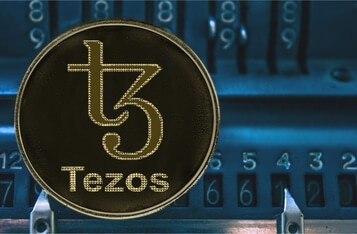Terminating Fake News with Blockchain
What's real and what's fake in the media world is increasingly difficult to discern. The war against fake news rages on, but there is one new weapon in the arsenal against misinformation: Blockchain

Sometime in 2018, the American Herald Tribune website published a story about Friedrich (anglicized as 'Frederick') Trump, Donald Trump's grandfather. The copy claimed that Frederick was a pimp and a regular drug user. The story went on to say that the man amassed a fortune running several brothels.

More recently, stories began to circulate about climate activist Greta Thunberg's identity. Such stories claimed that Thunberg is not actually real, but a character played by a young actress named Estella Renee. These news stories, truculent and striking as they might be, are not true. They are fake news.
Fake news and deception in history
The use of misinformation is by no means a new occurrence. Deception tactics have been used in warfare for centuries. There is evidence that deception tactics were used during the Roman-Persian wars, for example, but Operation Fortitude is perhaps one of the best-known examples of a large-scale deception campaign in history. Fortitude was implemented as a prelude to the D-Day Landings, in the closing stages of WW2. The operation's goal was to divert the German armies' attention from the intended landing sites across Normandy by creating the illusion that Allied troops would land elsewhere.
In most recent times, deception and misinformation have morphed into the catch-all term 'fake news', which has become a widespread scourge in modern media.
In the kingdom of fake news, the half-truth is king
The American Herald Tribune story as a whole was false, and the author/s probably knew it, but some elements rang true in it, and the writers well probably well aware of this too. There are conflicting stories as to how Donald Trump's grandfather Frederick acquired his wealth. While it is true that he opened a hospitality establishment (The Arctic Restaurant and Hotel) in Bennett, British Columbia, back in 1897, it is also widely believed that he used this hotel as a brothel, a practice that reportedly made him a very rich man. This wealth would trickle down the family tree, eventually landing at Donald Trump's lap.
It is this half-truth facet that makes fake news believable. But fake news needs one key element to warrant their existence, one that those bent on spreading misinformation cannot do without–an audience.
We live in an era where social media reigns supreme. People spend a great deal of their time online: Shopping, reading, gaming, learning, and a myriad of other activities can be experienced through reflective screens. It is this perma-presence in the online world that makes it so ready-made for the propagation of fake news.
About 2 billion people have Facebook accounts. That's around one-third of the world population. Such huge uptake creates a fertile ground for the rapid spread of misinformation or fake news, and the bad news is that, so far, there hasn't been any effective means to combat this scourge.
How can blockchain help to kill fake news
Facebook, Instagram, and a myriad of other apps and media providers bombard us with text and video content every minute of every day, and in the virtual world, telling what's real and what's not is a rather difficult task, particularly if there is a concerted and well-organized campaign behind the effort.
Blockchain has emerged as an effective weapon to counteract the insidious effects of fake news. The technology is characterized by its inherent decentralization and transparency, which effectively means that there is no central authority regulating it, and the network state is visible to every participating node.
Blockchain's traits enable a tamper-proof mechanism whereby any data stored on the chain becomes immutable. This can be applied to anything: Shipping information, medical records, and of course, news items.
Take any photograph, video, or news content found online. How can you really tell whether it's real or fake? Blockchain can add immutable metadata to any content, thus creating a digital history that will follow that particular piece of content anywhere it goes. This digital history can be traced and verified anytime, anywhere, so there is no possibility of changes along the way.
Conclusion
There is evidence suggesting that the American Herald Tribune originates in Iran, which may explain the Friedrich Trump story, among others. Fake news is often the first salvo in a multi-layered misinformation campaign to fulfill an agenda, whether it stems from an individual or a government. Because of the inherent dangers of fake news, many agencies are fighting to terminate the threat.
Commercial entities like Orange, of France's largest telecommunications companies, and the New York Times, are developing blockchain-powered projects to fight, and hopefully, eliminate or greatly reduce the prevalence of misinformation, deepfakes, and fake news in the media. How successful these efforts will remain to be seen, but it is at least a step in the right direction.
Image source: Roman Kraft via Unsplash

.jpg)
